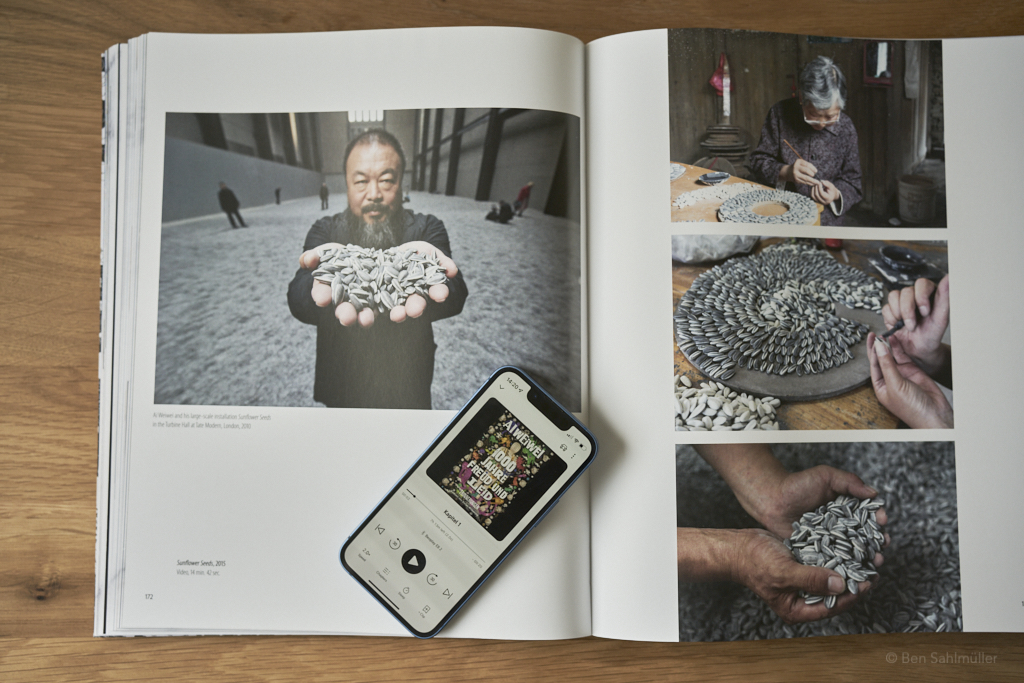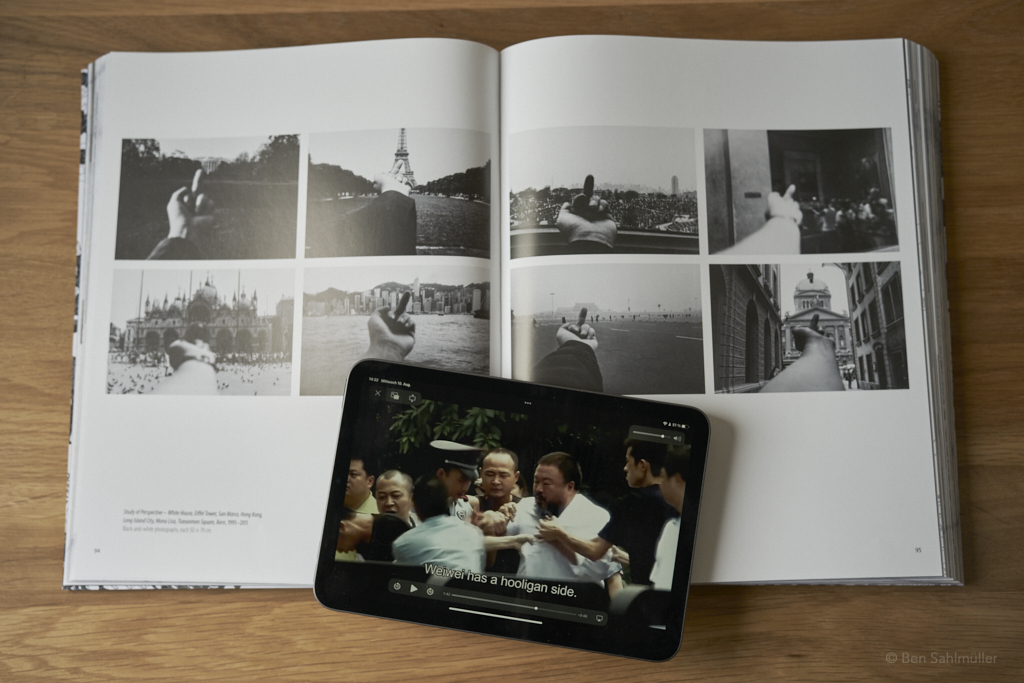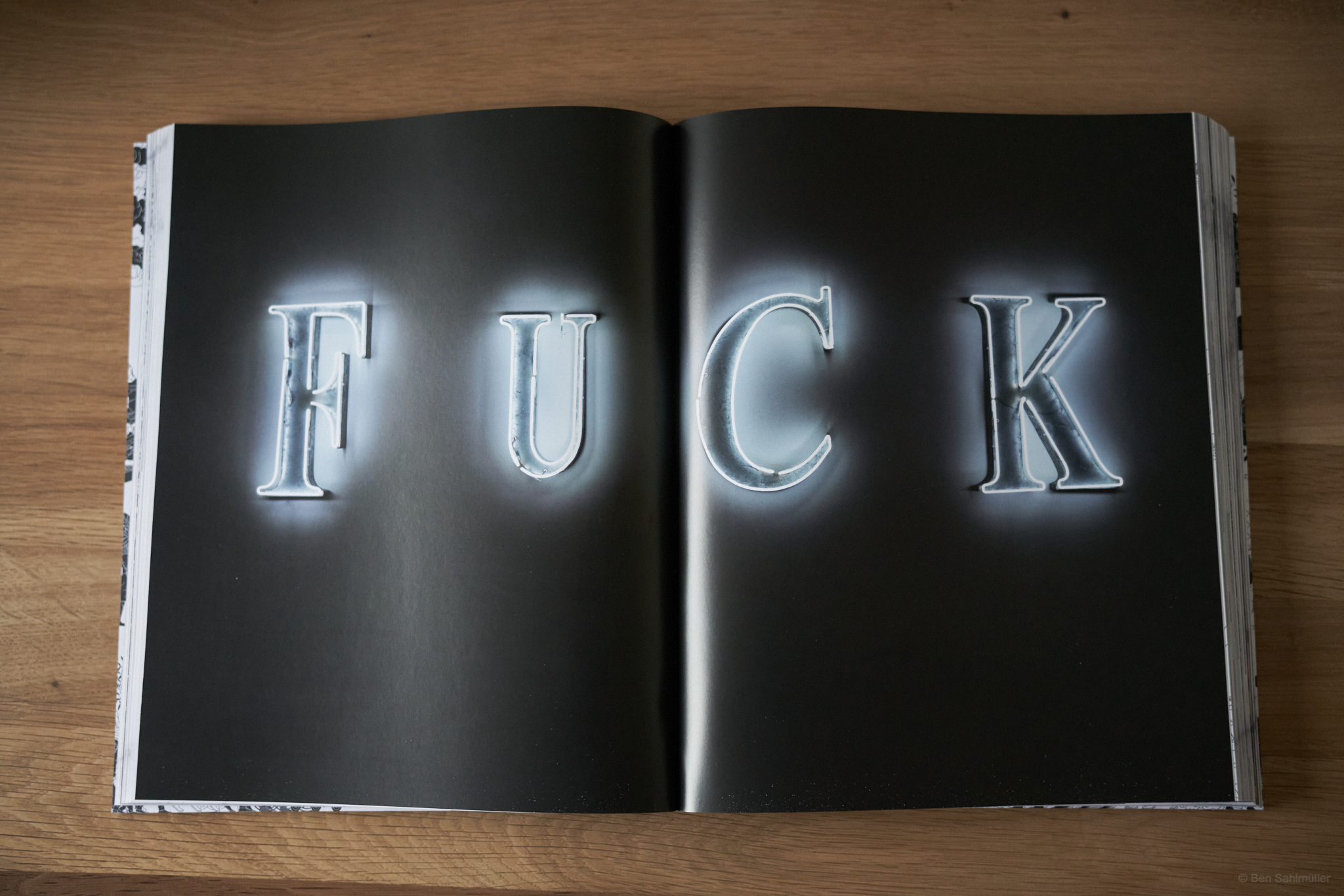Film: Alison Klayman, Ai Weiwei: Never Sorry
Rating: ★★★★★
My personal guess is that Ai Weiwei (艾未未) might be the second-best-known-by-Westerners Chinese currently alive. (After Xi Jinping, of course!) Well, maybe not – but he makes the top ten, somewhere between Jack Ma, Liu Xiaobo, Peng Shuai, Jackie Chan, Hu Jintao, Jiang Zemin, and Cixin Liu among other candidates. (I take the freedom to exclude the Dalai Lama from this list for obvious reasons.) I used to see him (Ai) taking a walk in Prenzlauer Berg a few times when I still lived in Berlin. In hindsight I wish I had cared and known more about his work back then, enough to take the courage to approach him with authentic appreciation.
Both the documentary Never Sorry as well as his (much later published) book 1000 Years of Joys and Sorrows would have been perfect to fill that (knowledge) gap.

Never Sorry is a 2012-documentary by the American directress Alison Klayman, awarded with a special jury prize at the 2012 Sundance Film Festival. I am not sure to which degree Ai rubber-stamped the documentary, but as much original material and multiple interviews with him over several years feature prominently, and as he built strongly on the general frame and narrative when publishing his own book nine years later, I assume the documentary has his blessing. Never Sorry accompanies Ai from 2008, in his studio “258 Fake” in Beijing, until 2011, after his arrest and detention and before he leaves China for Berlin. It never pulls the focus off of him. Ai’s book contextualizes these crucial years through his and his family’s broader biography, naturally adding many fascinating first-person accounts (I really liked it, ★★★★☆!) – but this review wants to focus on the outside view.
Klayman is invisible as director. By focusing on Ai, she astutely allows the viewers to find their own way through the complications arising from the fact that her movie presents one of the few Chinese artists who is both outspoken and (during the film’s time-frame) based in China, both patriotic towards China the country and people as well as critical of the party. (Positively framed: He is optimistic where others have learned to be complacent, demanding it to do better.) Yet, even this framing comes not without assumptions. Ai’s work can be found in museums, images thereof in coffee-table books, he is acclaimed as an artist globally. And yet, he is pleasantly (and often entertainingly) unadjusted to the global art market. “Weiwei has a hooligan side”, a companion of Ai is quoted in the movie. He himself agrees, arguing that it needs a hooligan to stand up against hooligans.
And thus, Klayman artfully threads the question what it means for Ai to be an artist, for us to see Ai as an artist, through the documentary. It was his frustration with his artistic work for the state (the Olympic “Bird’s Nest” stadium in Beijing) that pushed him towards activism – nah, citizenship – as he tried to rise awareness about the May 2008 earthquake in Sichuan, its many casualties, and the “tofu-dreg” corruption underlying many of the tragedies. And it was his activism that motivated him to create art, art as a creative use of form and imaginary (tables listing hundreds of names of dead pupils; broken Han dynasty vases; 100 million handmade and painted sunflower seeds), leveraged through social media, not to entertain but to create awareness. Is it thus surprising that he saw himself in his studio mostly as the idea giver? That most of the craft-work was done by others? That much of his work takes the form of videos and photos – or maybe even tweets, as when he posted an image of the police officers who beat and arrested him?

Personally, I think it is the symbolic imaginary and political undercurrent that not only carry his works, but that are his true artwork. Klayman brilliantly portrays a man “making art”, his ups and downs, courage and stubbornness, by just showing his videos and letting him talk. And the longer he talks, the more the image of the artist starts to crumble, ideas of a classical loner painting water lilies in his garden, an industrial manager conducting his minions to draw dots, a postmodern concept-thinker philosophizing about bananas on walls. It is not self-driven motivation that drives Ai, not courage that pushes him forward. It is because he is afraid that he has to do what he does, he tells us. No wonder he seems misplaced on a stage next to European art directors in turtlenecks. Yet, while their questions often seem ridiculous, by taking them serious his answers are sincere. To his mother he confesses: he cannot change what will happen, it is not upon him to decide. And while the camera keeps witnessing her, fighting with tears, we too know what that means, even before he needs an emergency brain surgery being beaten by the police, before the Shanghai government razes his million-dollar studio, before he finally finds himself in custody, before leaving the country he still loves. Ai’s is the courage of the suppressed yet proud, a courage born from destiny.
We all are but products of our times, simply by definition. While Ai was studying arts in New York, his fellow students were killed around Tiananmen Square. Sewing condoms to coats, not being seen by anyone, he missed the protests and lived. For any reclusive artist, I don’t think an experience like that inspires, I think it disenchants. Ai was among the few survivors, but he was no reclusive artist. His destiny was to be curious, quarrelsome, and to believe in integrity; to be among the first to stumble upon a micro-blogging site that carried his anger; for this website to be Twitter, to become what Twitter is now. Ai’s courage is born from contingency. His wisdom is born from understanding, accepting, living this gift as is – a feat far amiss for many of the big artists (“creators”, “builders”) of our time. Man-boys who fan the naïve myth of their own unique merit. Also on Twitter, of course.
